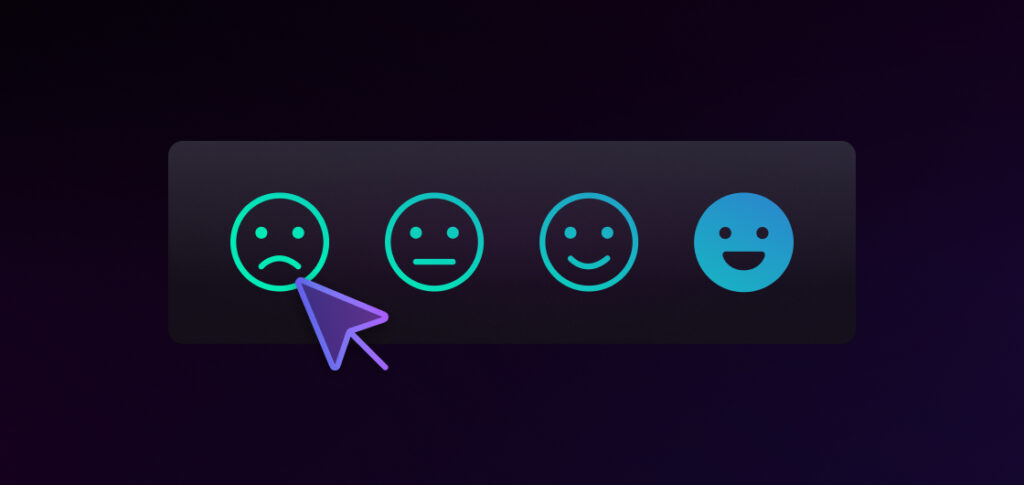
- Customer Experience
15 Bad Customer Experience Examples (and How to Fix Them)
Matt Goodman | Mar 17, 2025
Jul 11, 2024 | 9 minute read
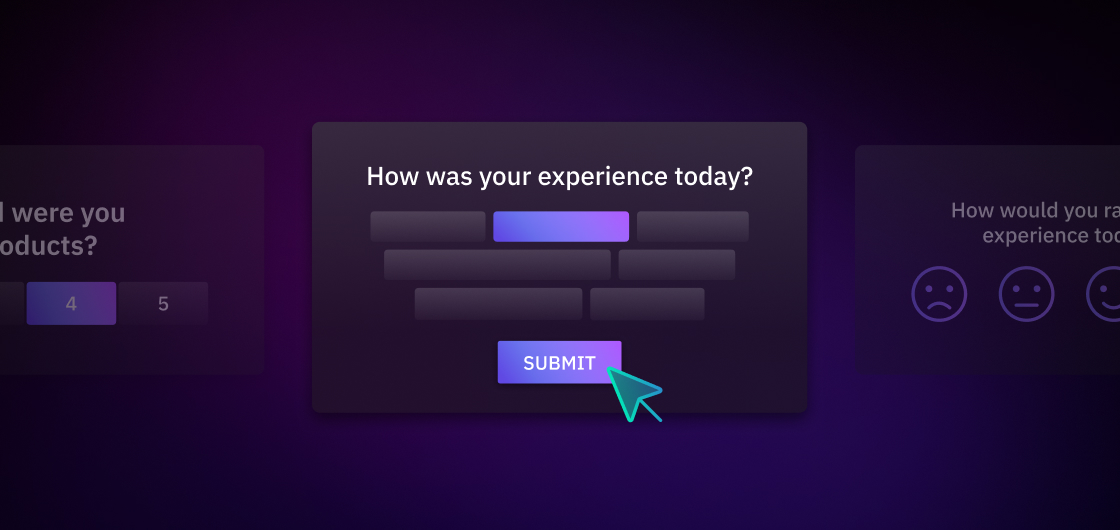
Matt Goodman
Co-founder, CEO
Voice of the Customer (VoC) surveys gather feedback on customer loyalty, satisfaction, service, and overall experience. Five main types help brands improve experiences, personalize marketing, and refine product offerings. When using these surveys, brands should keep them concise, personalize invitations, and promptly act on feedback.
Marketing teams and brands often scour data, analyze sales reports, and host think tanks, all-hands meetings, and strategy calls to answer one question—what do customers really want? Ironically, the simplest way to get an answer to this question is just to ask the customer.
The primary objective of a VoC survey is to gather feedback from customers about brand loyalty, product satisfaction, customer service, brand image and reputation, and even their comprehensive shopping journey. Brands can use these insights to make improvements, personalize the experience, hone marketing efforts, and adjust product offerings.
VoC surveys are useful for brands because they provide valuable insights into the customer’s needs, preferences, mindsets, and overall impression of the brand. They are flexible tools that can be adjusted based on the brand’s objectives.
Customer feedback (through multiple-choice or open-ended responses) helps brands prioritize the most important actions to create an engaging and frictionless ecommerce customer experience. They also help brands isolate pain points throughout the customer journey and concentrate efforts where they are most needed, whether on product assortment, UX, customer service, or post-purchase experience.
Voice of customer surveys can take many forms, depending on your brand’s specific objectives and desired insights. The following five are some of the most common:
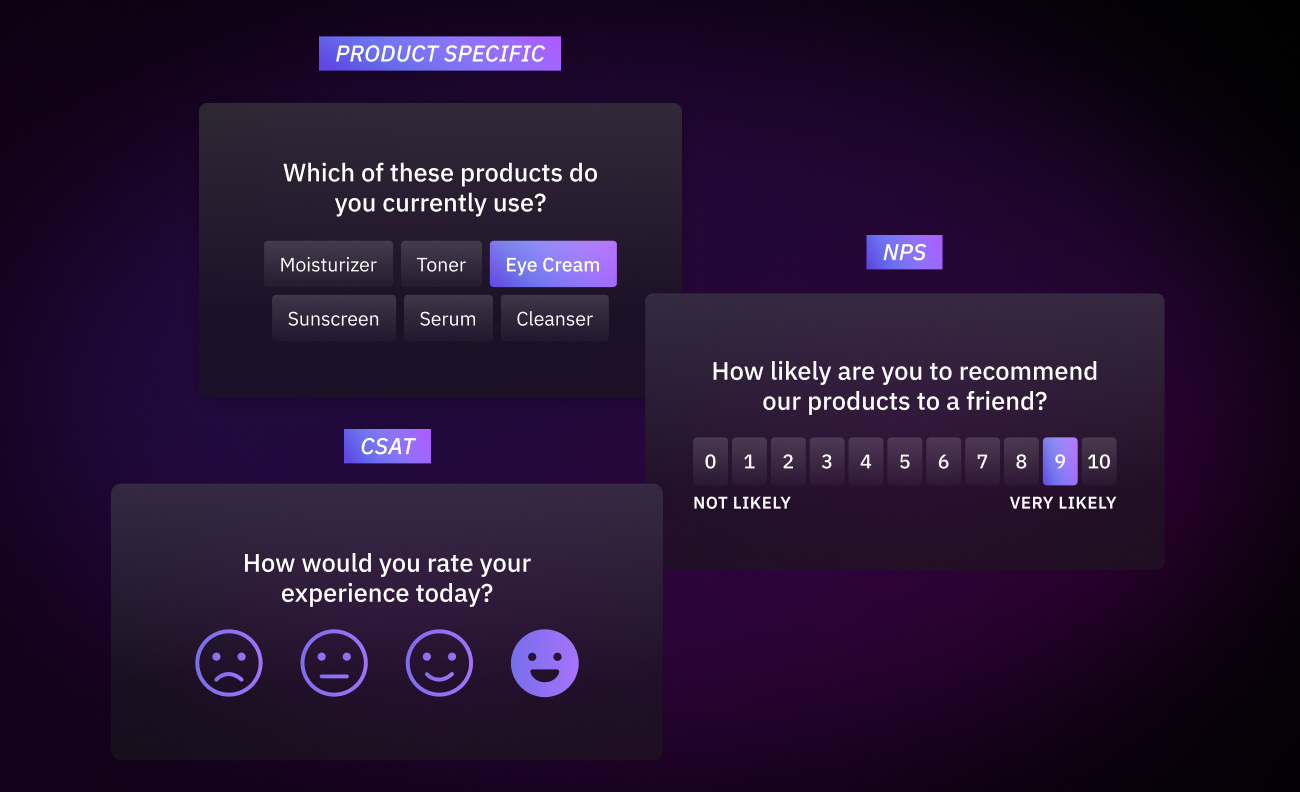
A customer satisfaction survey is a straightforward survey measuring the customer’s satisfaction level with your brand. They can apply to individual transactions or to their experience spanning all interactions with the brand. Think of it as a business health vitals check—it will tell you if something is wrong but not dive too deep into specifics. The next step after these surveys is to analyze the root cause of positive or negative results.
A traditional net promoter survey is typically just one question, like: “On a scale of 1-10, how likely are you to recommend our brand to a friend?” They have a high customer response rate and provide valuable data about customers’ level of loyalty. With these results, brands can measure whether customers are brand promoters (9-10), passives (7-8), or detractors (0-6).
A customer effort score survey tells how much a customer needs to work to make a purchase or interact with the brand. It asks questions along the lines of, “How easy was it for you to find what you were looking for today?” or, “Was your issue resolved?” They help identify customer friction points.
In addition to an NPS question, customer loyalty surveys ask what would prompt a customer to make another purchase with the brand or how likely they are to continue purchasing. They are useful for discovering more about customer loyalty behaviors.
Product-specific surveys isolate customers’ viewpoints on the product allowing brands to improve product offering and assortment. They also tell brands if poor results in other VoC surveys are caused by product quality rather than more easily fixed elements of the shopping journey.
Creating VoC surveys is just as important as employing them. We recommend following these five steps and approaching each with intentionality.
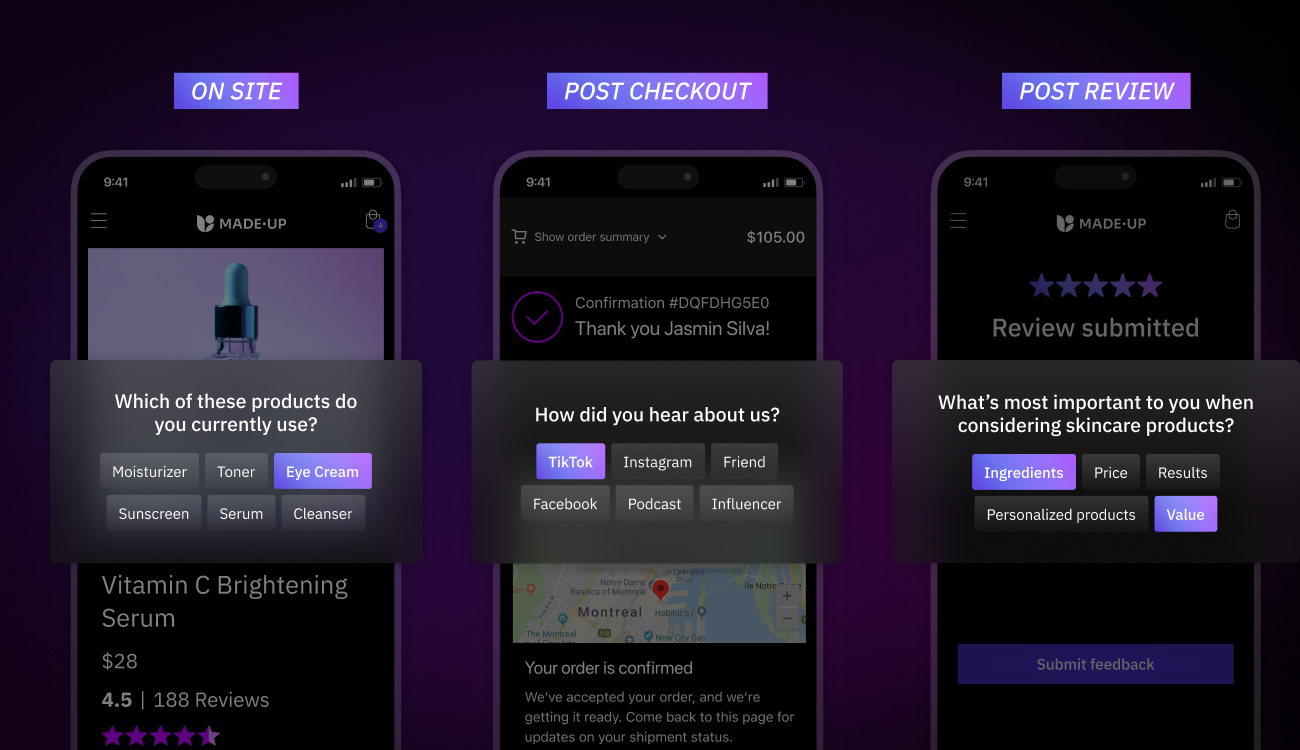
If you are ready to create voice of customer survey questions for your brand, consider these examples. Whether your goal is to gauge customer satisfaction, understand brand loyalty, or gather in-depth feedback, these questions can serve as a useful starting point.
Value or results-based questions aim to understand the perceived value and effectiveness of your products or services. They identify what customers appreciate most and what drives their purchasing decisions.
Brand loyalty or brand perception questions assess customers’ commitment to your brand and their perception of it in the market. They can reveal how likely customers are to return or recommend your brand to others.
Customer satisfaction questions focus on the overall satisfaction level of customers with their experience. They help identify areas of improvement in your services or products.
Open-ended questions provide customers with the opportunity to give detailed feedback that will reveal their thoughts about your brand. These questions can uncover specific areas for improvement and innovation.
First, analyze the survey data with a team of unbiased members from relevant departments. This should be a combined effort between public relations, marketing, CRM, and customer service teams to include multiple perspectives and ensure adequate distribution of valuable customer feedback.
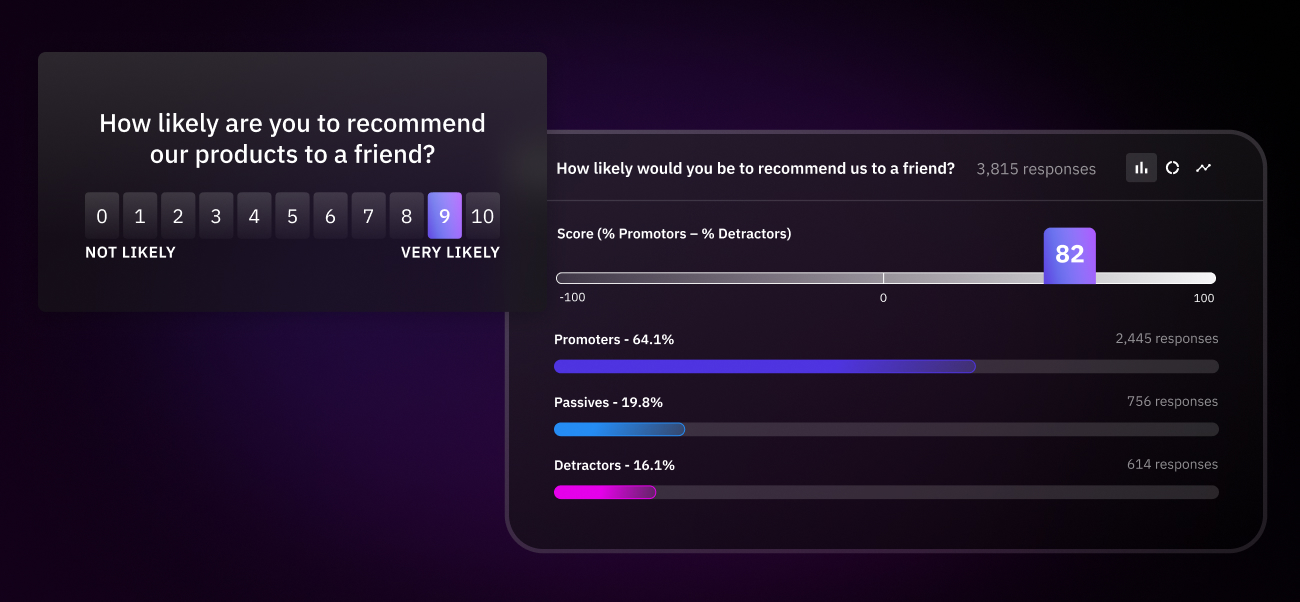
Next, ensure that results and insights are shared with relevant teams. For example, a product-specific survey provides valuable information for the design, sourcing, product development, customer service, and copywriting teams.
David Visser, COO of Zyber highlights more on sharing data is important, “Survey data is incredibly powerful in enabling all teams across the business to succeed. It can inform purchasing teams on what products customers are looking for, customer service teams on NPS/CSAT, as well as richer profiles to look at while supporting a customer, and marketing teams on customer-led attribution data.”
Without making improvements, adjusting marketing efforts, or enhancing the shopping experience, the results of surveys are rendered useless. Brands can best put VoC survey results to use by actioning the key insights and focusing on what changes would have the biggest impact on the customer experience.
Measuring impact helps get cross-functional team members on board with strategies, rationalizes deploying additional surveys for the future, and helps fine-tune or provide direction on efforts made for improvement.
With Okendo Surveys, your brand can create personalized, intuitive surveys, distribute through multiple channels, gather customer feedback, and analyze results in an easy-to-use dashboard. Book a demo call with our team to discover how we can help your brand improve the customer experience and create brand loyalty.
VoC surveys allow brands to hear customer feedback in their own words. While traditional data analysis, brainstorming sessions, and sales reports can still give valuable insights into the customer’s preferences, often the simplest way to serve the customer is to ask directly what they want, their satisfaction levels, or how they feel about the brand overall.
Related articles
Ready to learn more?